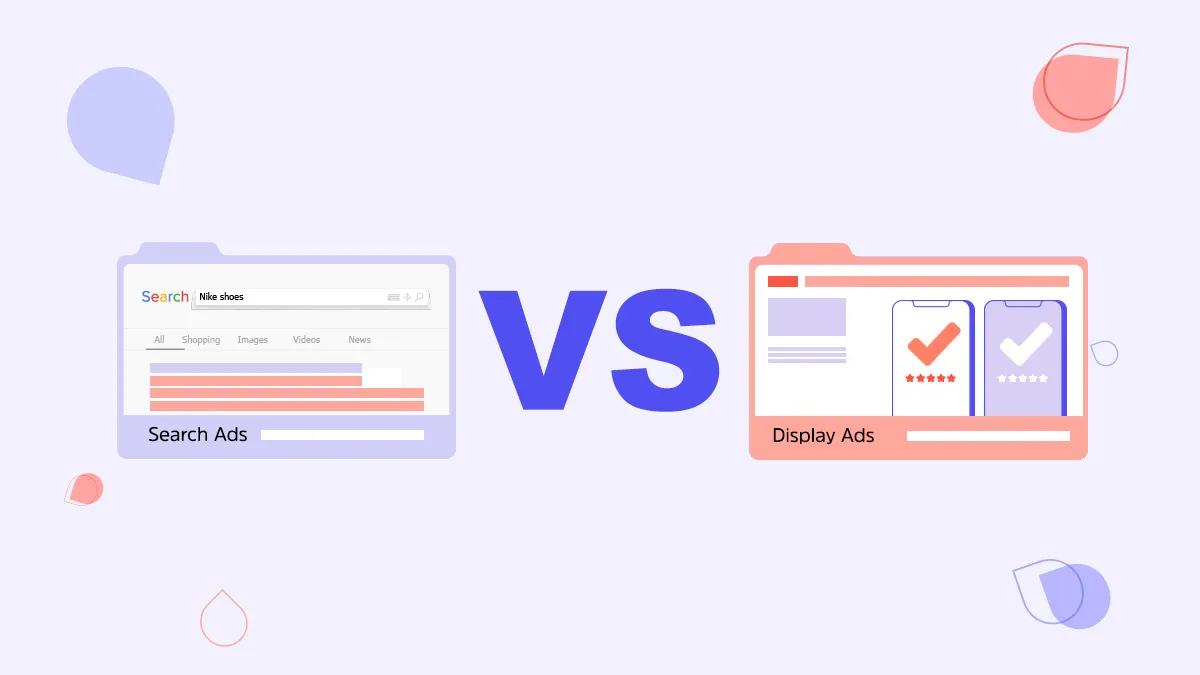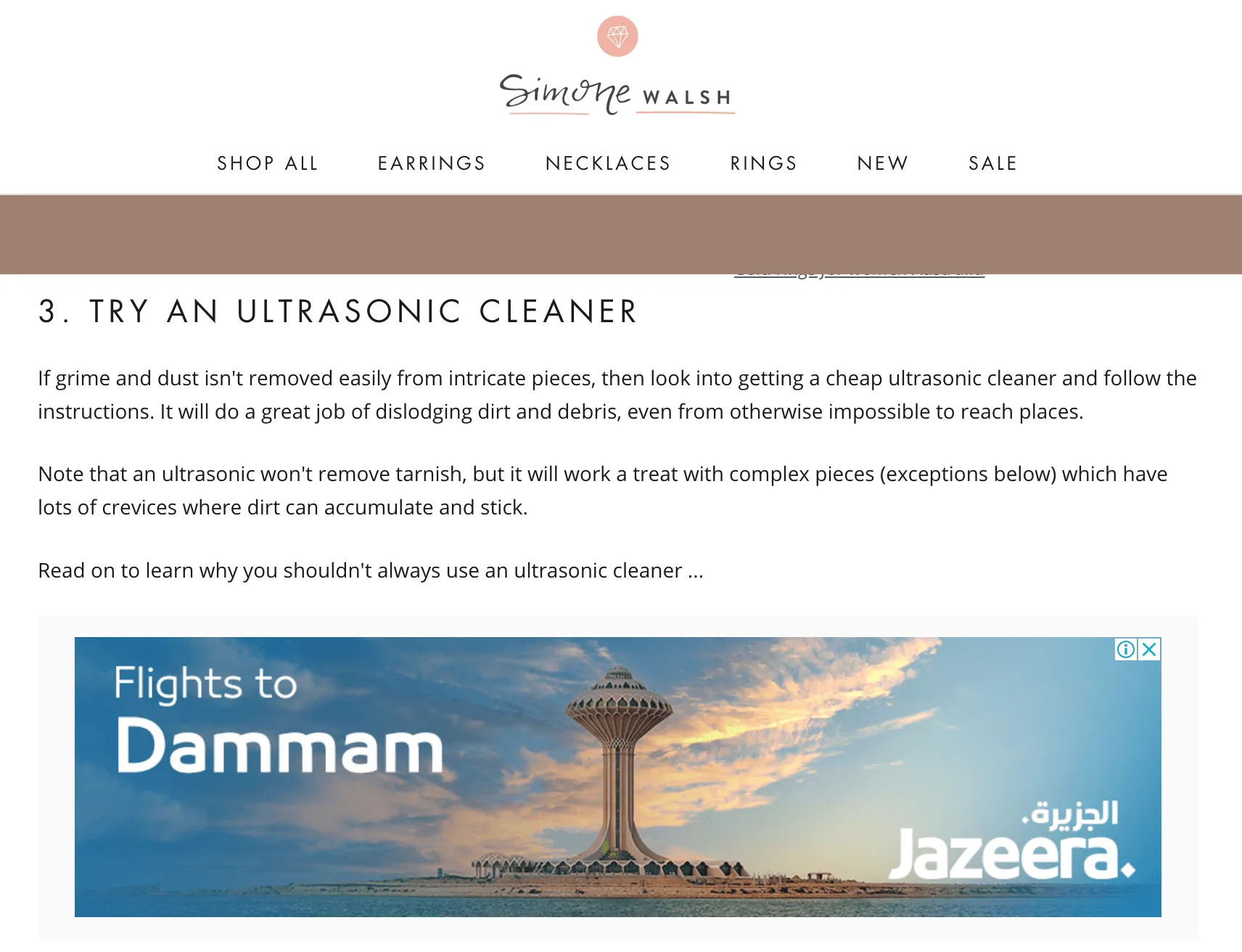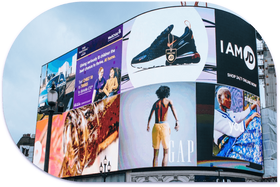PPC vs Display Ads Explained: Which Is Right for Your Business?
Find out which online advertising method suits your needs best
Updated March 31, 2024.

Online advertising can be a quick and powerful way to boost your digital presence—up to 80%. Plus, certain online ads can improve your conversions by 59%, especially when people search for your business after seeing those advertisements.
Success depends on choosing the right ad format based on your target audience and business goals. The two main options available to you are pay-per-click (PPC) and display ads. PPC ads can be a strategic choice if you want to make immediate sales, while display ads are ideal for creating a lasting brand presence and gaining recognition over time.
In this post, we'll highlight the key differences between PPC and display ads so you can make an informed choice for your business.
Fundamental differences and examples
Below, we explore the main differences between PPC vs display ads, including what they look like and how they're used.
PPC ads
PPC ads are a way for businesses to show ads online and pay only when someone clicks on their ad. This makes PPC ads staples in search engine results like those on Google and social media feeds on platforms like Facebook. PPC ads are a popular and effective way to reach potential customers who are actively searching for products or services related to what the business offers.
For example, a search engine PPC ad should be well-crafted to grab the attention of potential customers, provide relevant information, and entice them to click on the ad. Joes Beauty achieves this by clearly showing:
- The product's name and brand
- Value to the customer (unbeatable pricing + fast shipping)
- Other product categories the customer may be interested in
In comparison, Facebook PPC ads need to be highly visual. Social media is synonymous with high-quality images, so successful Facebook PPC ads need to stand out from the competition and catch the target audience's eye. Comic Warehouse achieves this with their Facebook PPC ads by:
- Letting product images take up most of the ad space
- Incorporating a carousel to promote more than one product in a single ad
- Adding simple 'Shop Now' buttons underneath each image
Display ads
Display ads are like online billboards or posters that you see while browsing websites, reading articles, or using apps on the internet. You'll spot these as banners, sidebars, or even pop-ups on various desktop and mobile sites. They're meant to catch your eye with visuals such as images, graphics, or videos. These ads aim for long-term brand recognition and usually charge based on how often they're viewed, not clicked.
For example, this display ad banner pops up in one of Simone Walsh's blog posts. Its copy is clear and to the point, while the image tries to connect to the customer emotionally.
The main difference between PPC vs display ads is that PPC ads appear during active searches, while display ads appear during casual browsing.
Aligning advertising goals and budget allocation
Deciding how much money to allocate to PPC ads vs. display ads can feel like walking a tightrope. PPC ads deliver quick leads and immediate results—yet come at a higher price per click. Display ads cost less and help create awareness and visual impact, albeit with a longer wait for ROI.
So how do you decide? The key is to align your budget with your goals. Suppose you have $5,000 to spend with the goal of acquiring 200 new customers this month. Then, you'd do well to allocate 70%-80% to PPC since it can provide you with quick, targeted results. The remaining 20%-30% can go into display ads, which are effective for long-term brand building.
Pro tip: want to maximize your ROAS? Work with one of our top paid advertising agencies.
Audience targeting and testing
PPC and display ads differ significantly when it comes to audience targeting. PPC ads zero in on people through keyword relevance and search intent. Display ads, meanwhile, target broader groups based on interests and demographics.
To make the most of audience targeting, you need to focus on specific details. For PPC campaigns, this means harnessing search intent and demographic factors. For display ads, align your campaign with specific interests and popular websites.
And don't forget to regularly test and refine your campaigns for the best results. Here are some strategies to consider:
- A/B test ad copy to identify the most persuasive messages
- Vary landing pages to discover the best user journey
- Tweak visuals to figure out what engages your audience the most
Based on the results, you can fine-tune your strategies to optimize performance across both PPC and display ads.
Designing engaging ad content and measuring performance
The impact of compelling ad content cannot be overstated. In a crowded internet landscape, engaging ad content can be the difference between a fleeting glance and a meaningful customer interaction.
Both PPC and display ads allow you to run ad content, but each requires a distinct approach for optimal results.
For PPC campaigns:
- Keep copy concise and focused
- Use a compelling call to action
- Incorporate dynamic elements like videos to elevate engagement
For display ad campaigns:
- Use visually captivating images to grab attention
- Incorporate storytelling to engage viewers and convey your message effectively
Once you apply these tips, keep a close eye on particular metrics to see how well you're doing.
For PPC, watch your Quality Score, click-through rate, and conversion rate. These numbers reveal how engaging your ad is and how often it turns clicks into actions.
For display ads, focus on viewability, total impressions, and engagement rate. These tell you how often your ad actually gets seen and interacts with your audience.
» Here are some helpful tips to help you nail your ad creatives
Optimize your advertising strategy with Mayple
While considering the merits of PPC and display ads for your business, you might find value in a specialized guiding hand. That's where Mayple—a comprehensive platform for managing paid search campaigns—comes in.
Mayple combines industry expertise with advanced tools to help businesses achieve their advertising goals. Our PPC experts have a proven track record in optimizing PPC and display ad campaigns for hundreds of brands, and they can help you jump on the latest PPC trends and 10X your campaign performance.
Platforms and scenarios
PPC and display ads each have their native territories where they shine brightest. PPC ads usually dominate search engine results, primarily through platforms like Google Ads. If you're aiming to target users based on specific search intent, Google Ads often provide the highest chance for immediate conversions.
On the flip side, display ads find their home on social media feeds and various websites. They excel at building brand awareness over time. If you're looking to capture attention and target broader audiences based on interests or demographics, display ads on social media platforms are the way to go.
Both ad types offer unique advantages depending on the platform and the goals you aim to achieve, making a clear case for diversifying your advertising strategy.
Crafting your digital ad strategy
The benefit of digital advertising is its ability to deliver measurable results quickly. If immediate conversions are your priority, using PPC for business is a no-brainer. On the other hand, display ads provide the visibility you need for long-term brand building. Platforms like Mayple can help fine-tune your marketing strategy to ensure you're using your budget effectively.
» Want to learn more about PPC ads? Get all the answers in these top PPC books








